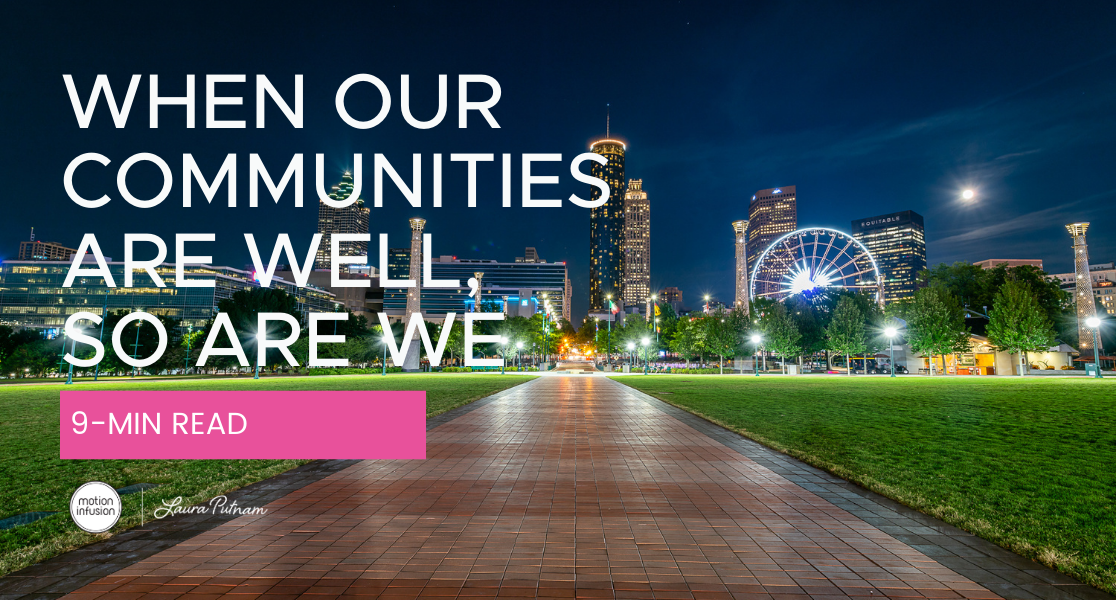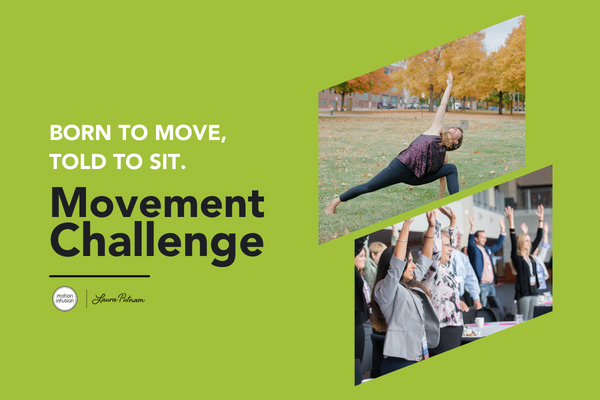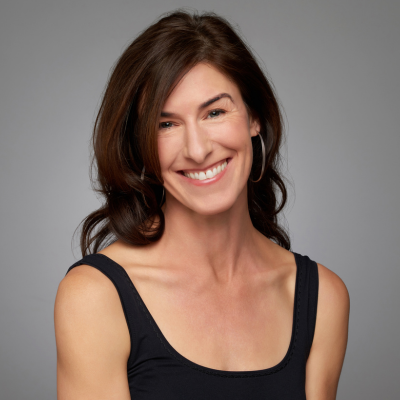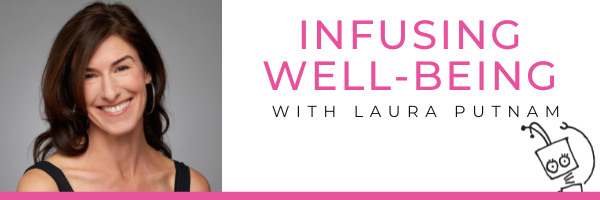|
Achieving personal wellbeing goals can be challenging, if not impossible. Why? Because more often than not, our environment is literally conspiring against us being healthy. Think about it:
Therefore, each of us has to become a student of our environment, uncovering all the ways that it's either driving us toward better health or just the opposite. Meanwhile, the big lie in wellness is that better health and wellbeing is all about personal choices. But, as recent studies show, culture shapes our health. Therefore, achieving better health and wellbeing as individuals - aka, ME AT MY BEST® - begins with what we, as communities, choose to do. In essence, community wellbeing = the surprising path to wellbeing for all. So, let's take a look at what community wellbeing means - on three levels. First, community wellbeing is "where you live." Do your surroundings support you in being your best self? Do you feel like you're a part of your neighborhood and invested in your community? Community wellbeing is about feeling safe where you live, having places to play, and feeling part of a community that reflects your values and preferences. Strong ties to the community improve our mental health because we feel a greater sense of belonging and connectedness. Second, community wellbeing is "what you give." Research shows that those who give back experience a higher quality of life, have stronger social networks, feel a deeper sense of purpose, and are more likely to live longer. According to multiple studies, volunteering has been shown to be a straight path to improved health and wellbeing. Our brains actually light up when we give back, restoring both our minds and bodies. Those people who regularly give back, averaging more than a hundred hours of community service every year, have been shown to have a lower incidence of heart disease, lower rates of depression, and greater longevity. Third, community wellbeing is personal wellbeing. The healthier our communities are, the healthier we are. Period. When our environmental and cultural context is healthy, so are we. In fact, it's nearly impossible for us to be unhealthy. Conversely, if our environmental and cultural context — aka, our community — is unhealthy, it is nearly impossible for us to be healthy. We only have to look at the Blue Zones, the seven global "fountains of youth," where an unusually high percentage of the population is not only surviving, but fully thriving into their hundreds! It's not that these people are that much more motivated in their personal pursuit of health and wellbeing. It's just that they've been lucky enough to live in a Blue Zone — where it's hard to NOT be healthy! The so-called "Power of 9" healthy practices, such as moving throughout the day, having strong social ties, people living in multigenerational households, and having a plant-based diet, are just the way things are done. How can we activate community wellbeing? Start a Movement Where You Are: Better health and wellbeing aren't just about choosing a kale smoothie over a burger and fries. In fact, research suggests that only 20% of our health is due to our personal choices. The remaining is due to the conditions within which we live, learn, work, and play, i.e., our communities. Providing access to the things that enable health and wellness to flourish, such as affordable healthcare, healthy foods, safe spaces to exercise, and free time to focus on self-care, are keys to ensuring wellness for all people. One study found that "accessibility, specifically availability, affordability, proximity, and physical access, were key to a community thriving." Unfortunately, many communities lack these resources. To bring the wellness privilege gap, we need to make this invisible topic visible by talking about it, learning how to support underserved communities, and advocating for change in policies that have allowed this gap to exist. Wellness shouldn't be a privilege but a right for everyone. Get Moving Together: Although we are born to move, we are told to sit. Our cities and communities are better designed for our cars than they are for us walking. Even when we visit someone's home or office, we're invited to "Have a seat." Everything in our culture conspires against us being physically active. Fixing this is less about what we need to do as individuals and more about what we can do as communities. Organize a charity walk or run in your neighborhood. Put together a morning yoga group at the local park or host a dance class at your local community center. We can challenge the cultural norms prohibiting physical activity by promoting movement as a community. And remember, even the smallest actions can have big impacts. Last December, I was so thrilled to see my city of San Francisco start a revitalization project through Let's Glow SF, especially after a time of post-pandemic havoc in the downtown area. How might we create a spark of community revitalization in our own cities? True wellbeing isn't a solo act; it's a collective effort. Embracing a community-centric approach ensures that everyone has the opportunity to thrive, breaking down barriers and promoting a shared experience toward a healthier, happier life for all. get moving together...
0 Comments
Leave a Reply. |
Follow laura on social:Website by Brand Genie
|
join laura's monthly newsletter
|





